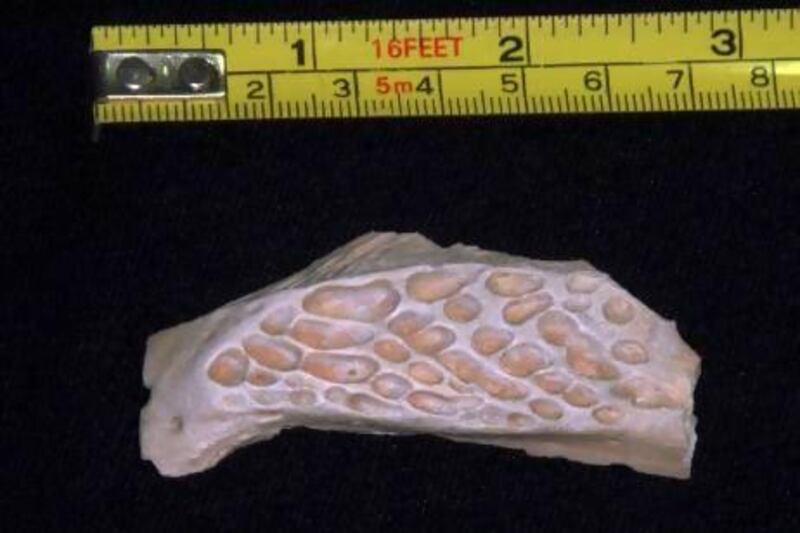Work on the national railway has uncovered fossils up to eight million years old that give an insight into a time when Abu Dhabi’s desert sands were lush savannah.
Among the finds at the site, south-east of the Ruwais oil refinery, are crocodile, elephant and antelope bones and ostrich egg shells. Fossilised fish, along with traces of the roots of ancient plants, have also been found.
The findings date from the late Miocene Epoch, between 6 and 8 million years ago, and help confirm scientists’ belief that back then Abu Dhabi’s environment was similar to the present-day African savannah with rivers and extensive grasslands.
The presence of fossilised freshwater bivalves “demonstrates the fact there were rivers flowing through this area”, said Dr Mark Beech, coastal heritage and palaeontology manager of historic environment at Abu Dhabi Tourism and Culture Authority.
“It is a small collection of fossils but it again demonstrates an important characterisation of the late Miocene environment and it is adding to our knowledge of all the other fossil sites that we already discovered.
“It is basically showing rivers and vegetation, crocodiles in the water and antelopes coming and drinking at the edge of the river.”
Scientists said the site had led them to believe that the Baynunah Formation, a sequence of mostly river-deposited sands widely exposed in Abu Dhabi’s Western Region, is larger than previously thought.
Dr Beech estimated the formation spreads about 260 kilometres from East to West along Abu Dhabi’s coastline with the furthest point located about 70km inland.
The site, located about 6km inland, was discovered in 2011 during surveying work along the route of the country’s railway network.
Etihad Rail officials and scientists co-operated in protecting the site about 500 metres west of the railway line and, as of May, it has been protected by a 3.7km fence.
“We are happy that Etihad Rail has co-operated in excellent fashion with us to protect the cultural heritage of Abu Dhabi,” said Mohammed Al Neyadi, director of the historic environment department at the Abu Dhabi Tourism and Culture Authority.
The fossils are not the first unearthed due to the railway work. Experts surveyed the route, from Sila to Dubai and Al Ain, in 2009.
“We identified a number of archaeological and fossil sites on its route,” said Dr Beech, who applauded Etihad Rail on their handling of the findings.
“We very much appreciate they contacted us very early on in the project design. In many ways they are an exemplary project because they fulfilled their environmental obligations early on, they carried out environmental-impact assessments of the whole route and they consulted all the stakeholders,” he said.
Dr Beech is planning to return to the site early next year, along with colleagues from Yale University and the American Museum of Natural History. “That will involve an examination of the fossil site itself and a study of the remains recovered.”
vtodorova@thenational.ae





